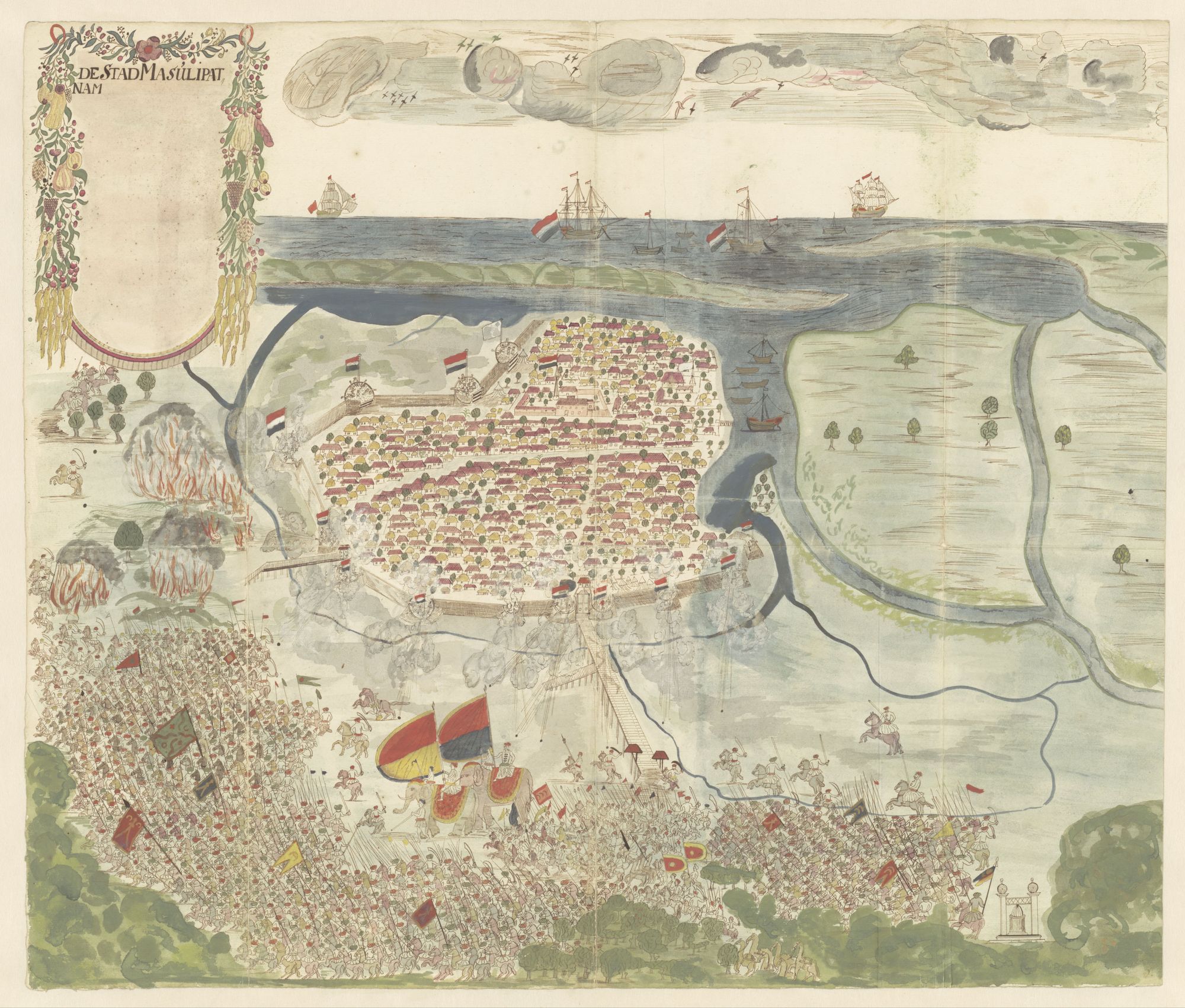Masulipatam

Masulipatam is a port city nestled on the bank of the Krishna River on India’s Coromandel coast, in what is now Andhra Pradesh state.

From the late sixteenth century onwards, Masulipatam rose to prominence as a major Asian centre of global maritime trade. Its urban layout was oriented around this trading role. Its location gave it a seaward vantage point onto the Bay of Bengal and the wider Indian Ocean World, while its landward aspect left it well-connected to the landmasses of the Indian subcontinent, notably via the nearby Krishna River.

Masulipatam’s emergence was connected to the consolidation of the Sultanate of Golconda in the late 1500s. This was one of the political entities which ruled the central plateaux of the Indian subcontinent, known as the Deccan, until the latter’s conquest by the Mughals a century later. Masulipatam became the maritime gateway of the prosperous Golconda Sultanate. Around 1700, it had a population of over a 100,000. Masulipatam was home to a cosmopolitan community of merchants, including a sizeable group of Persian traders. Armenians and Arabs also had a share in the trade. Contacts with European nations developed first with the arrival of Portuguese merchants; the Dutch then opened a trading establishment there in 1606, followed by the British in 1611.

Masulipatam’s trading networks spanned both the Western and Eastern Indian Ocean. Given its location, the port maintained strong connections with Burma, Malaysia, the Indonesian archipelago and the China seas. But its economic exchanges also encompassed Persia, the Persian Gulf region, the Arabian Peninsula and the Red Sea. The sultans of Golconda developed a political economy aimed at enhancing the connections of their domains, and especially of Masulipatam, to the network of caravan routes crisscrossing central and northern India, and central and west Asia more broadly.

Machilipatnam became famous amongst Europeans as a trading post for precious and semi-precious stones, including rubies from Burma and diamonds mined in Golconda. However, its chief exports were mostly cotton textiles (or “chintzes”) produced in the Deccan and the Bengal delta and then exported to Persia and Europe, where they became increasingly popular in the eighteenth century. Other exports included spices, pepper, rice, metals, dyes (such as indigo), saltpetre and sugar.

The decline of Machilipatnam’s share in regional and global trade in the eighteenth century profited Calcutta. Over this period, Calcutta would establish itself as the hub of trade in the Bay of Bengal and the centre of the emerging British empire in India. However, Europe’s fascination for the riches of Machilipatnam and Golconda continued. The Koh-i-Noor, one of the largest diamonds in the world, and which was found in the mines of Kollur in Golconda, became the property of the British crown in the 1850s. A testimony of the splendour of Golconda, it also symbolises the violence of British colonialism in the Indian subcontinent —and recalls too that the first launching point for English/British activities in the subcontinent had been in this region, with the establishment of trading posts on the Coromandel coast in the seventeenth century.
References
Shah Manzoor Alam, "Masulilipatnam, a metropolitan port in the XVIIth century", Islamic Culture, vol. 33 (1959).
Sanjay Subrahmanyam, "The port city of of Masulipatnam, 1550–1750: a bird's-eye view", in Narayani Gupta ed., Craftmen and Merchants: Essays in South Indian Urbanism (Chandigarh, 1993).
Sanjay Subrahmanyam, "Persians, Pilgrims and Portuguese: The Travails of Masulipatnam Shipping in the Western Indian Ocean, 1590–1665", Modern Asian Studies, Vol. 22, No. 3, (1988): 503–530.
S. Arasaratnam and A. Ray, Masulipatnam and Cambay: A History of Two Port Towns, 1500-1850 (Delhi, 1994).
